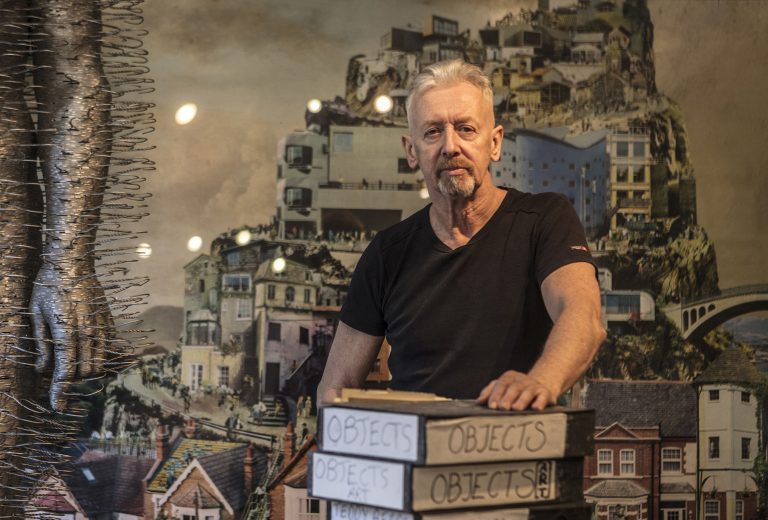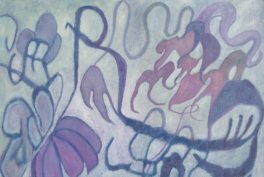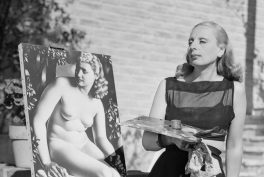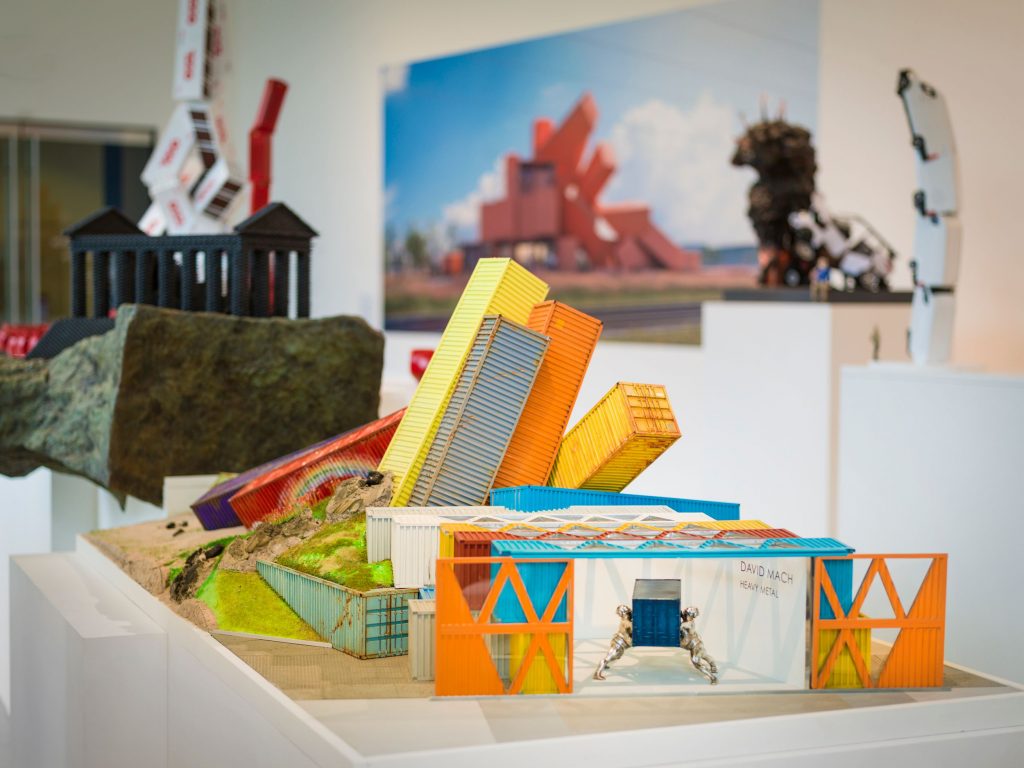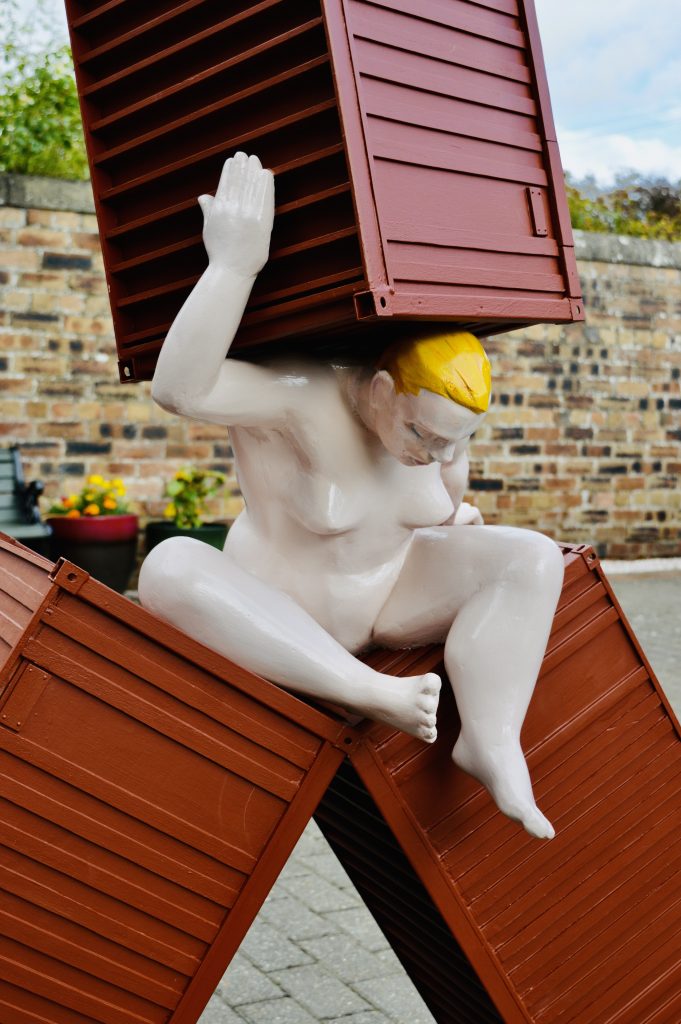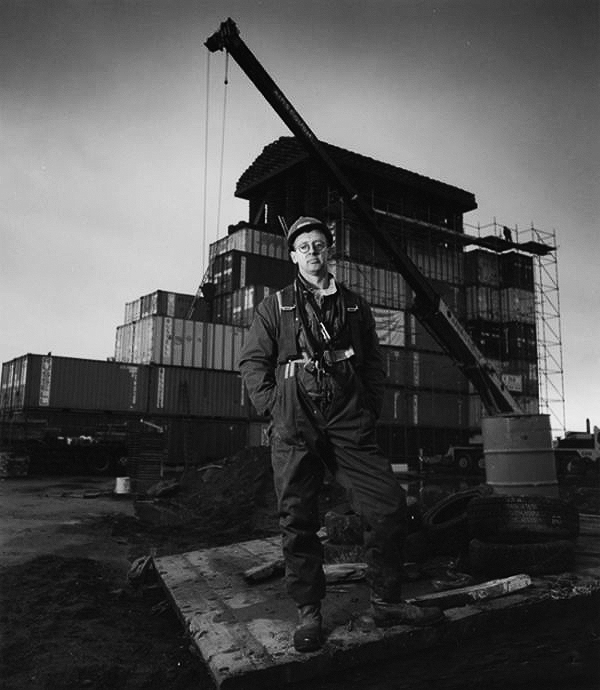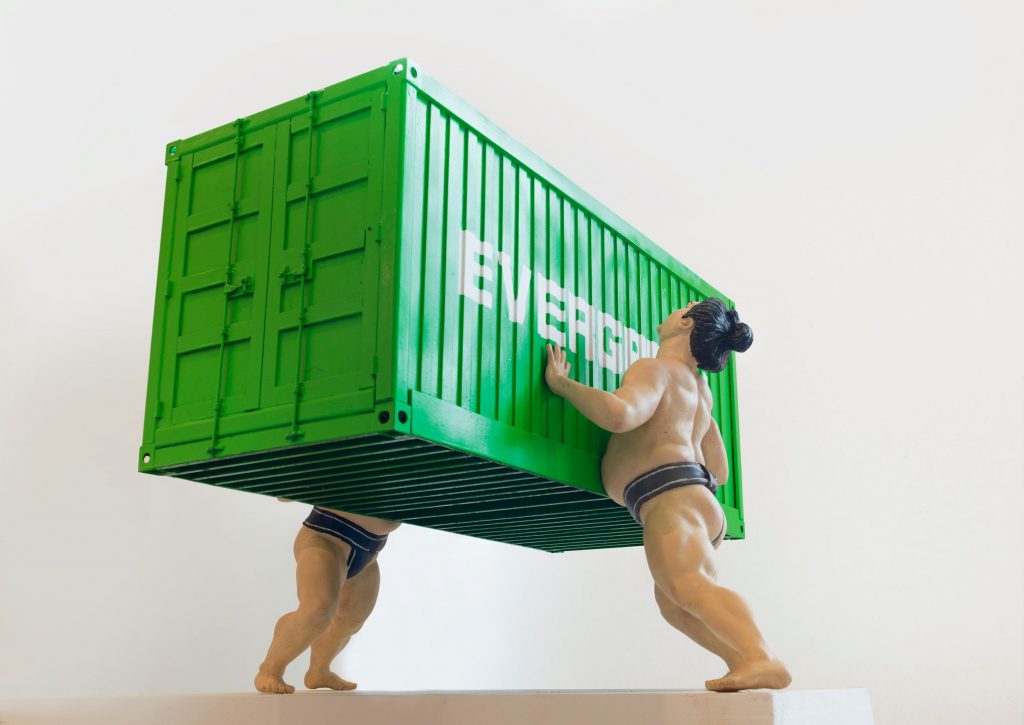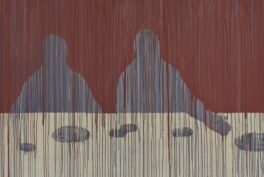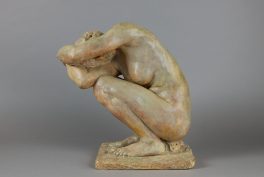Vithória Dill: First of all, congratulations on the opening of your exhibition! I can only imagine that it was a lot of work, especially in the final steps.
David Mach: We’re so excited to have this exhibition open and yes, having the whole thing done was a mighty task. It’s always the same: I can shoot myself up at 40 to 50 years of always working at the last minute. You would think you would learn to get ahead of the game once in your life here. But not a bit of it.
VD: Your first solo exhibition was in 1982. What would you say has changed — or not — in this time, in your creative process and your relationship with the whole process of creating an exhibition?
DM: I’ve gotten greedier and greedier for size, scale, and material. It can’t be extravagant enough for me. I want to pursue that so hotly. I’m still enjoying it. Actually, I’m surprised by how much I enjoy what I do. And now we’re breaking into architecture, almost by accident, and that’s a really great thing. I’m enjoying that a lot too.
VD: What do you mean by “almost by accident”?
DM: I’ve done things that were big enough to be considered architecture, but the roots of all these things are sculpture. Even the buildings that were designed are definitely just as much sculpture as they are architecture — except now you can get inside, and other things are going to happen within those shapes, and those structures, too. So it’s accidental, because I accidentally got asked to design something that they like very much.
I’m in a state of flux of ideas. I’m finding myself in an evening sleep designing a whole football stadium. Ridiculous! I mean, I’m actually doing this in my sleep and having dreams about designing houses and drawing them up in the scene. I can do all these things, so I just need to find the opportunities to make them into reality. I probably sound like I’m nuts.
VD: It’s not nuts, it’s art! And on that note, your use of materials has been described as extravagant and controversial. You are often inspired by everyday objects, and now you’re working with metal and shipping containers for this exhibition. How did that come up?
DM: We’re working with shipping containers, telephone boxes, Volkswagen camper vans, and Mercedes Benz sprinter vans… We’ve got a piece called the Oligarch’s Nightmare, which is a Range Rover being blown up as if a bomb was in the car. So I’m using objects that everybody knows. You don’t go to the art shop to get a Range Rover. I always had a problem with that, even as a kid. There was something about art that I didn’t trust, even then.
I come from a very industrial place. There are oil platforms and hundreds of feet tall structures, and everybody beavered away like it was the center of the universe. And the docks, where they built the oil platforms, all these things were huge, extravagant, involving materials like steel and so on. So I got that kind of lust for an extravagant manufacturer from there, definitely. And I like to use things that you know, and that your mom knows, and the guy on the street also knows. I don’t have to explain what that is, and that links me to you. You could be the most suspicious person in the world about art… well, I lure you in with my magazine, with a hundred tons of magazines.
I found working for many galleries very dry, boring, and clean. Also precious and snobbish, all sorts of things that I don’t like about art. We’re not doing things because we think we’re clever. We’re doing something because we can’t help making those things. And purely I want to show you what the hell that is.
VD: Where do you take inspiration from? You’ve mentioned a few things already, for example, growing up in a place marked by manufacturing. But what else? Do you have other people who inspire you, your own life, or things that you see and learn?
DM: I often find myself over-inspired. I find all sorts of things interesting, with a mix of art, music, architecture, poetry, and writing. I’m part of the way through like three books. I’m doing a sort of silly amount of stuff at the same time. But I like to meet and talk to people. I like opinions. I like people with a sense of humor. Being Scottish comes with nationality, and also being bolshy. This kind of bolshy not to the point of being impolite. That’s probably a secret of life, I think, to stand up and be. No: I don’t have an opinion about it. Rather: have an opinion about it!
I remember Elvis Castello talking about how tunes would appear in his head. Just have a tune that would come up and be a great thing. He said it’d be like five or six or ten tunes in a day. Before we had mobile phones, he said, “I used to go to a telephone box and hum a tune into my answer machine.” And I thought the guy is having so many ideas and was scared to lose them, that he records a bit of that. I’m a bit like that. So you don’t have to go nuts about it. You just have to collect it somehow and organize it, so that you can do it. That’s the important thing.
VD: On a final note, what do you aim for the public to take from your work? Anything you would like to communicate directly to your audience?
DM: You want them to enjoy it. You really want them to applaud, to pat you on the back. You want to see them say, “Well done, that’s fucking fantastic, you’re a genius”. But what they’re gonna do is what they’re gonna do. YYou gotta leave it up to them. I guess I get this from my dad – he would say things that were not particularly true. He would exaggerate and I quite like doing that just to see what people think. I picked it up from him a long time ago.
I hope if there is a message within the work, it is to stand up and put yourself out. That’s definitely a secret of life.
This interview has been edited and condensed for length and clarity.
Heavy Metal will be on display at Pangolin London until Saturday, March 25th.
